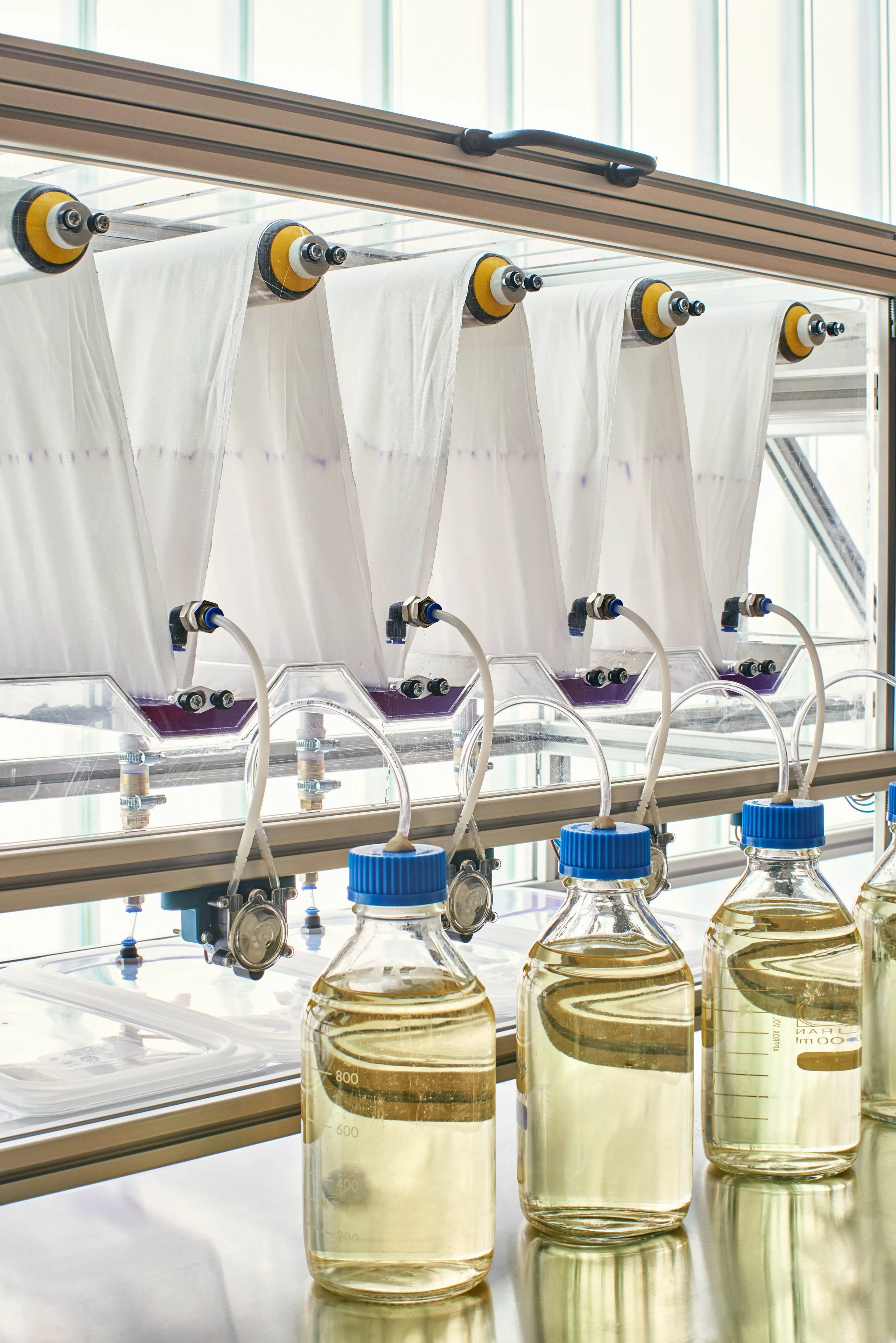Charlotte Werth
Moving Pigment
Working with pigment-producing bacteria, this machine is capable of producing consistent patterns and shapes for scaling up and automating environmentally safe textile dye production.
This project aims to scale up and automate the process of co-designing textile patterns with pigment-producing bacteria. It intends to enlarge and make visible a reality that is usually hidden from sight, showing us the incredible beauty of this parallel microscopic world.
The high degree of uniformity demanded in the context of mass production and consumer capitalism has led to extensive usage of petrochemical dyes. These often have disastrous impacts on ecosystems through the pollution of watercourses and landscapes.
In contrast, bacteria dye has many environmentally friendly advantages, including far lower water usage and no use of harmful chemicals. Bacteria dyeing is a rather beautiful and unique method of dyeing, creating colour-gradients and lines which cannot be easily imitated. The microbes grow in slightly unexpected ways that informs the design process.
Challenging the established separation of human and non-human species can create meaningful innovation. Designing with and not against nature necessitates alternative practices and new instruments. The machine developed within this work is designed to experiment with and explore the process of bacteria dyeing through automation. It represents a case study for the prospective large-scale implementation of sustainable co-designing dye practices.


